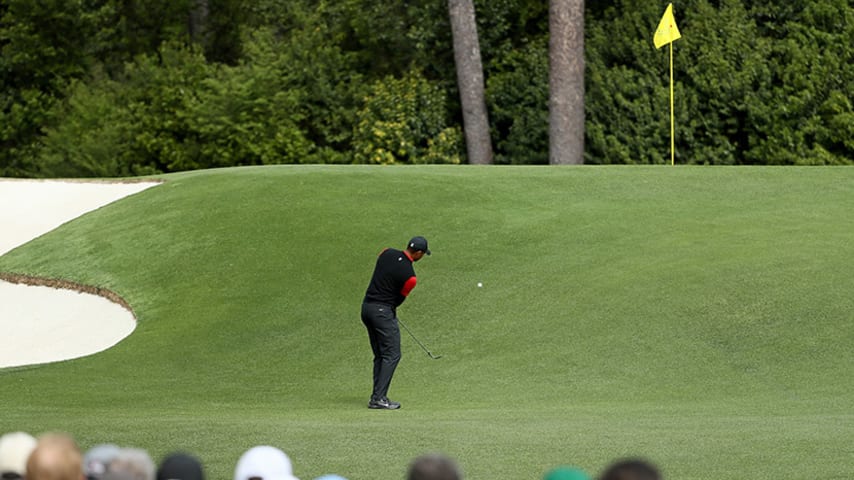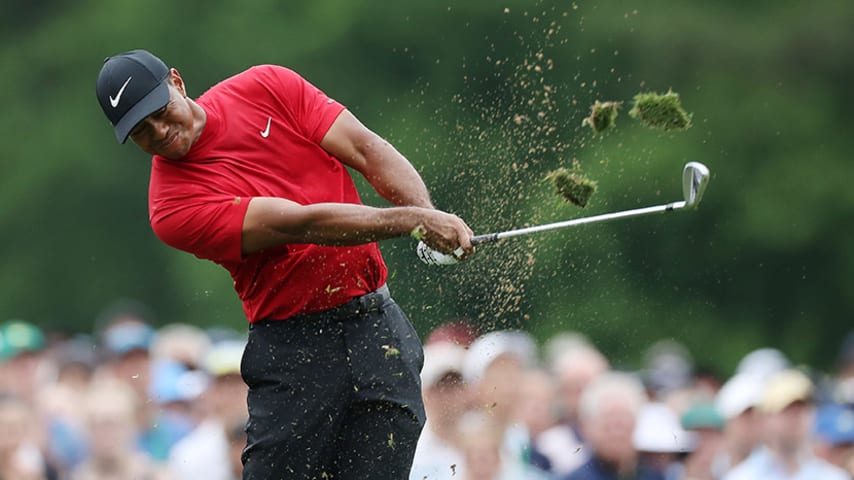A look at the changes to Augusta National's 5th hole
4 Min Read

The par-4 5th, known as "Magnolia," was lengthened 40 yards to play 495
Written by Sean Martin
The par-4 5th, known as "Magnolia," was lengthened 40 yards to play 495

Players to watch at the 2019 Masters Tournament
AUGUSTA, Ga. – No. 5 at Augusta National, though it is fashioned after one of the most famous holes in the world, is often overlooked because it sits alone on a corner of this venerated property.
Patrons often start their day by speed-walking their way to Amen Corner. Or they stroll down the ski-slope-steep 10th fairway to take in the scenic vista. Many of the holes are easily accessible from the old practice range, which sits between the ninth and 18th fairways.
Augusta National may be golf’s grand stage, but it also is a compact one. The close proximity of the holes helps accentuates the trademark roars. By comparison, No. 5 is on a relative island, flush against the edge of the property.
The fifth hole has been in the spotlight this year, though. It has been a popular talking point heading into this year’s Masters, and for good reason. The hole was lengthened 40 yards to 495 yards.
As driving distances increased, many players could hit a 3-wood off the tee and a short-iron into the green. Now a driver and long-iron will be necessary for many players, bringing back the challenge that Alister Mackenzie intended.
The fifth hole was fashioned after the Road Hole at St. Andrews. That nickname could apply to No. 5, as well.
The new tee is on property that used to sit across Berkmans Road. Augusta National spares no expense, though, in its efforts to improve the Masters. It’s impossible to tell that the hole was extended onto land that was once was across a street.
Jordan Spieth, who won both the Masters and FedExCup in 2015, said that the fifth hole will now challenge No. 11 for the title of toughest on the course (the eleventh hole tied No. 10 for top honors last year, as both played to a 4.3 scoring average).
The fifth hole was the sixth-hardest on the course last year, playing to a 4.16 scoring average. That’s just slightly below its all-time scoring average of 4.26. The field has never averaged under par on No. 5.
Hitting less than driver off the tee isn’t an option for many players because it may leave them with a wood into a green fronted by a steep slope. Players who lay back off the tee also will have an obstructed view of the putting surface.
“If you want to play short of the bunkers, that really makes the hole in my view, makes it a little bit too long,” Tommy Fleetwood said. “I think definitely it’s a bigger test of a hole for sure.”
Hitting driver will bring the deep fairway bunkers back into play. Jordan Spieth, the 2015 Masters champion, said those traps are “essentially a penalty stroke” because of their depth. It’s all but impossible to reach the green from those traps.
“In the past, if you hit it into the bunkers, you actually had half a chance of getting it up somewhere by the green,” said Tommy Fleetwood. “Now you've got no chance.”
The hole was designed to favor players who took the bold line off the tee, though.
“Players lacking the necessary confidence to play along the dangerous left side sometimes become overcautious and play too closely down the right side of the fairway,” Bobby Jones wrote in Sports Illustrated in 1959. “From this side the second shot to the green becomes much longer and far more difficult.”
It will take 313 yards to carry the two fairway bunkers on the left.
The uphill hole should play even longer this year because of rain that fell on Monday and Tuesday. The softer greens will help players, many of whom have been hitting 4- and 5-irons into the fifth green.
That putting surface is fronted by a steep slope that requires players to fly the ball onto the putting surface. The green falls away on all sides, and a bunker sits in the back-left corner.
“It is one of the bigger greens out here, but you have to be so precise where you’re landing it,” said Fowler, who hit a 5-iron on No. 5 in one of his practice rounds.
Not every part of the hole was made harder. Some of the green’s contours were softened to compensate for the longer approach shots.
“It's difficult. It's going to be a very difficult hole,” said Bryson DeChambeau. “I like that they shallowed out the green a little bit, flattened it a little bit and created a couple more accessible pins.”
Three-time Masters champion Phil Mickelson, for one, is in favor of the changes. The harder hole will allow the best players to separate themselves from the field, he said.
“That’s a good thing,” he said.












